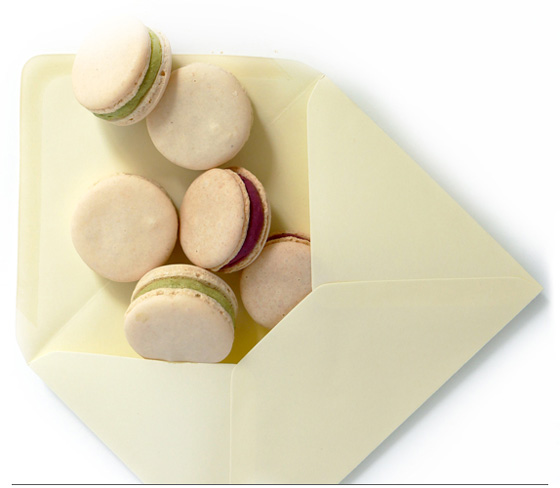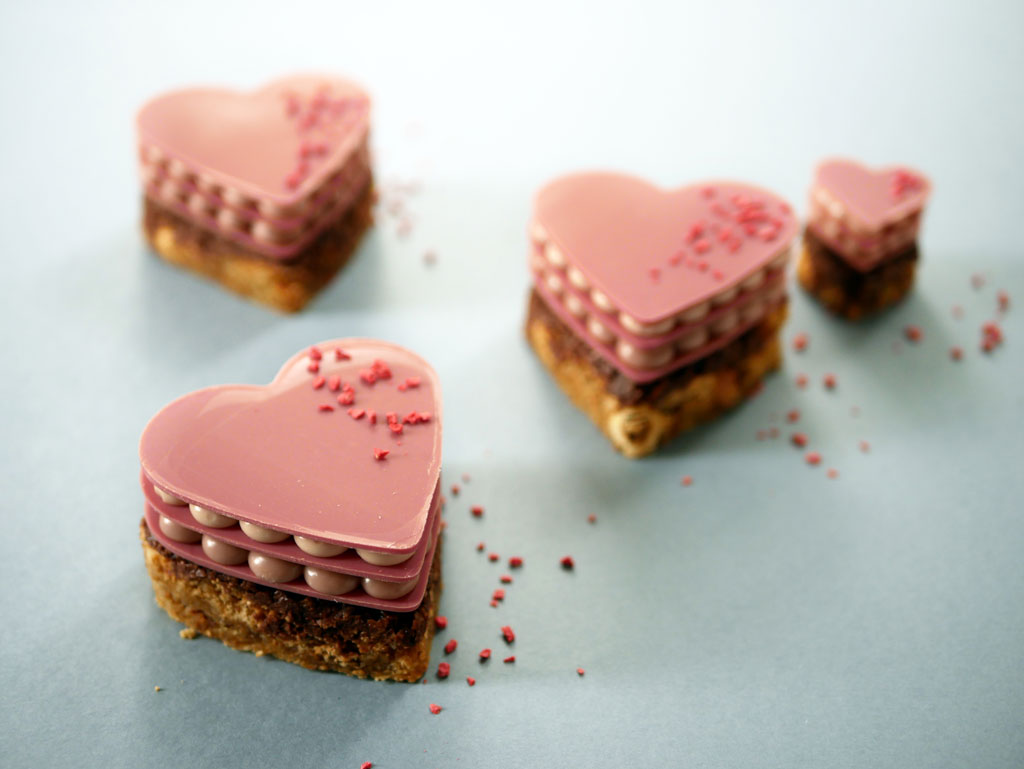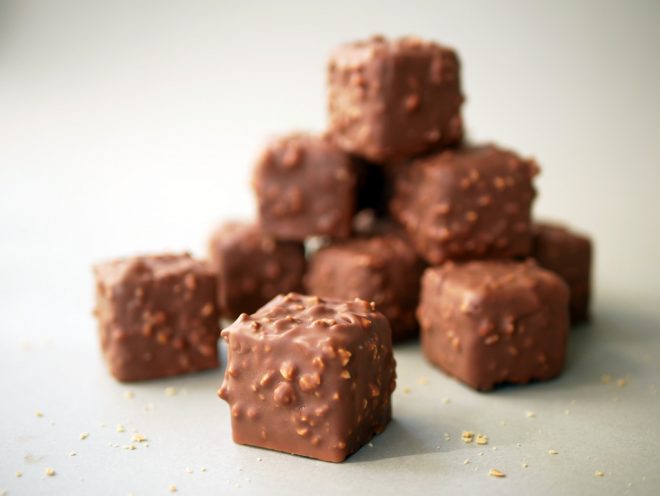Ruby Chocolate Plaisir Sucré


On September 5, 2017, I celebrated my 35th birthday. On the very same day, ruby chocolate was revealed to the world. Coincidence? I don’t think so. The universe gave me a pink gift – only it took a year and a half to reach me. Ruby chocolate is the fourth of its kind (after dark, milk and white). The color is pink and the taste is sweet and a bit sour, with no artificial flavors or food coloring. Thanks universe!
Callebaut, one of the biggest cocoa companies in the world, worked on creating this chocolate for more than a decade. The recipe is still a secret. Ruby chocolate is made from ruby cocoa beans, with a pinkish-red natural color. It is believed that they didn’t go through a fermentation process so their original color remains. It’s kinda cool that the color isn’t a byproduct of food coloring. That goes hand in hand with the flavor which resembles a combination of milk chocolate and white chocolate with sour notes at the end.
…
From the first moment I heard about ruby chocolate, I knew exactly what I would make with it: Plaisir sucré by French pastry chef Pierre Hermé. I made two variations of this dessert in the past: a three chocolate plaisir sucré and a pistachio plaisir sucré. It’s a dessert that celebrates chocolate in all its forms. It’s got tempered chocolate, chocolate ganache and chocolate chantilly. That way you get three variations of ruby chocolate in one dessert.
The recipe is pretty similar to the three chocolate plaisir sucré recipe. This recipe makes 4 personal heart shaped desserts and a couple more bite-sized ones. You can also just make it in the classic form like on the other post and get 10 rectangle shaped desserts. You may also play with the sizes of the hearts, as long as you don’t break a heart while doing so.
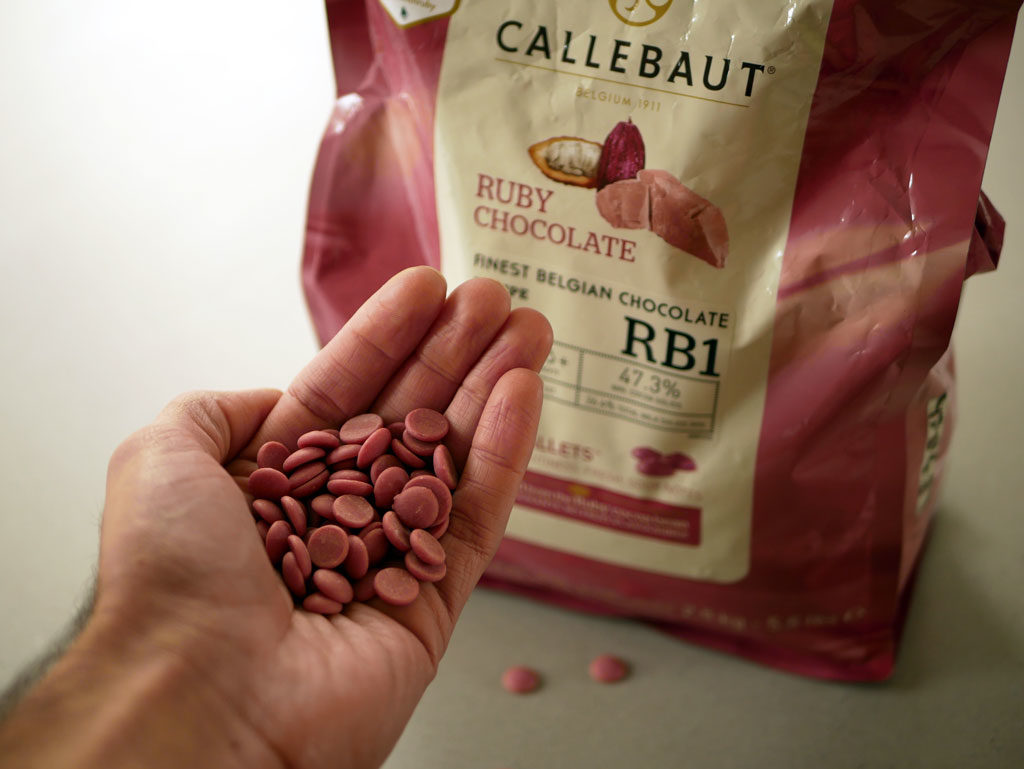




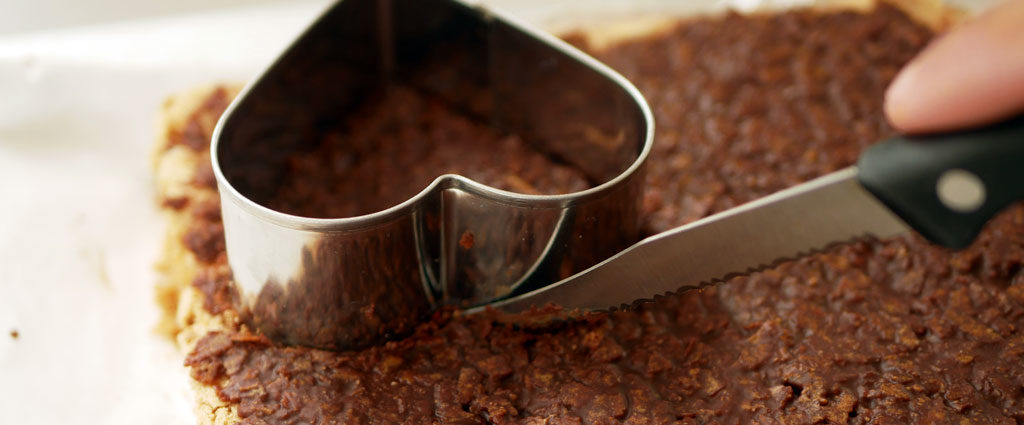




Ingredients
Ruby chocolate chantilly
100 g ruby chocolate
140 g heavy cream
Hazelnut dacquoise
105 g peeled hazelnuts
115 g powdered sugar
115 g egg whites
40 g sugar
45 g whole peeled hazelnuts
Hazelnut praliné feuilletine
75 g hazelnut praliné
40 g dark chocolate
15 g butter
40 g pailleté feuilletine*
Ruby chocolate ganache
140 g ruby chocolate
100 g heavy cream
12 g honey
Chocolate hearts
300 g ruby chocolate
Decoration
Dried raspberries
Equipment
A square baking ring (size: 18×18 cm, height: 5 cm at least)
Heart shaped cookie cutters (sizes: 8 cm & 4 cm)
Pastry bags fitted with a smooth 8 mm piping tip
An acetate sheet (size: approx. 40 x 30 cm)**
Aluminum foil
Thermometer
* Replace with 20g puffed rice for a gluten-free
version.
** You can use plastic wrap instead of acetate sheets. The final product won’t
come out perfect though.
The recipe makes 4 personal cakes & 2 bite-sized ones
Ruby chocolate chantilly
It’s recommended to prepare the chantilly the night before. However, t’s possible to do it on the same day. If so, it should be put in the freezer for about half an hour to an hour, then moved to the fridge until it sets.
Put the chocolate callets in a measuring pitcher. Bring heavy cream to a boil and pour over chocolate. Mix a little bit with a spatula and then use a hand blender to blend it to a uniform consistency. Pour into a bowl and cover the surface of the chantilly with plastic wrap. Keep in the fridge overnight.
Chocolate hearts
Take a flat baking sheet and wipe its surface with a damp towel. Place an acetate sheet (or plastic wrap) on the damp surface (moisture allows it to stick to the surface). Go over the top with a dry paper towel to remove air bubbles and to straighten it.
Temper chocolate following this post. Meaning, choose a tempering technique and match the temperatures of ruby chocolate to it: Heat the chocolate to 42-45 °C (108-113 °F), chill it to 26 °C (79 °F) and then heat it again to its temper point which is 29 °C (84 °F). If you temper the chocolate using the Mycryo technique, add the powder when the temperature gets to 35 °C (95 °F).
Once the chocolate is tempered, pour it to the center of the sheet. Using a large angled frosting spatula, spread the chocolate across the sheet (up a bit, down a bit, and then sideways) to get a thin and uniform layer. Avoid moving the spatula over the chocolate more than once or twice.
Give the chocolate a minute or two to set, just until it’s almost dry to the touch. Using heart shaped cookie cutters, cut 12 big hearts and 6 (or even more) small hearts. Let the chocolate hearts set at room temperature.
Hazelnut dacquoise
Place a layer of aluminum foil on a baking tray, followed by a layer of parchment paper and set the square ring on top. Fold the edges of the paper and foil to the sides of the ring and tighten them so that the batter won’t spill out of the bottom of the ring.
Put 105 g hazelnuts and powdered sugar in a food processor and grind together for about half a minute until it becomes a powder. Be careful not to over-grind otherwise it will become hazelnut paste.
French meringue:
In a stand mixer, whip the egg whites on medium speed until thick white foam is formed. Keep whipping on the same speed and add sugar gradually. Once all the sugar has been added, increase the speed to high and whip until firm peaks.
Preheat oven to 165 °C (330 °F). Add a third of the hazelnut meal to the meringue and fold with a spatula. Add the rest of the hazelnut meal and continue to fold until uniform.
Transfer the batter into the ring and flatten the surface using a small frosting spatula. Distribute the whole hazelnuts on top. Put it in the oven and bake for 30 minutes, lower the temperature to 150 °C (300 °F) and bake for another 10 minutes.
Allow the dacquoise to cool for a few minutes outside the oven. Separate the dacquoise from the sides of the ring, preferably using a wide spatula. With a plastic card (or any flat tool that has corners) gently push the sides of the dacquoise down to flatten its surface. Leave the dacquoise inside the ring and let it cool completely at room temperature.
Hazelnut praliné feuilletine
Melt chocolate and butter together on a double boiler. Remove from heat, add praliné and mix well. Add the pailleté feuilletine flakes (or puffed rice) and mix again until uniform. Spread an even layer of it over the dacquoise surface. Keep in the fridge to let it set.
Ruby chocolate ganache
Put the chocolate callets in a measuring pitcher. Put heavy cream and honey in a kettle. Bring them to a boil and pour over chocolate, making sure all the chocolate is covered. Mix a little bit with a spatula and then use a hand blender to blend it to a uniform consistency. Pour into a bowl and cover the surface of the ganache with plastic wrap. Keep in room temperature.
Do not keep in the fridge so it won’t harden. To speed up the process, flatten the ganache on a tray and cover with plastic wrap. If it’s still not stable enough for piping when the time comes, put in the fridge for about 5 minutes.
Put it all together!
Take the dacquoise out of the fridge and release it from the ring. Place the big heart shaped cookie cutter on the dacquoise. Using a serrated knife, first saw the crunchy layer around the cookie cutter and only then cut the bottom layer with one stroke. You should get 4 dacquoise hearts. Cut 2 more small hearts (or even more) from the dacquoise leftover.
Back to the chocolate hearts. Turn over the baking sheet and peel the acetate sheet off the chocolate hearts. Set aside.
Back to the chocolate ganache. Make sure it’s set and ready to pipe. If it’s still too runny, put in the fridge for about 5 minutes. Once set, fit a pastry bag with an 8 mm smooth tip and fill it with ganache.
Pipe a bit of ganache on each dacquoise heart and place a chocolate heart on top of it. If the chocolate heart looks slanted, fix it by piping some more ganache under the sloping area to straighten the heart. Pipe drop-shaped ganache on top of the chocolate heart. Allow to set for about a minute or two (put it in the fridge if it’s hot outside) and then place a second chocolate heart on top.
…
Back to the chocolate chantilly. Remove from the fridge and whip by hand until you get a thick yogurt-like texture. Be careful not to over whip, otherwise the cream might separate or become grainy while piping. Here’s how you know it’s ready: throw the batter from the whisk back to the bowl. If it flattens immediately, Whisk a little more. If it takes time to flatten, it’s ready.
Fit a pastry bag with a smooth 8 mm tip and fill it with chantilly. Pipe drop-shaped chantilly on top of the chocolate heart. Allow to set for about a minute or two (preferably in the fridge) and then place a third chocolate heart on top.
Decorate the heart shaped plaisir sucré with pieces of dried raspberry (or any other decoration you desire). Store the cakes in the fridge in a sealed container until it’s time to serve.

Tags In
Related Posts
Leave a reply:Cancel reply

Search the blog
![]()
Get updates by email
